Air chartering is the business of renting an entire aircraft unlike individual aircraft seats i.e., purchasing a ticket through a traditional airline. Air charter companies focuses on individual private aircraft, urgent or time-sensitive cargo, air ambulance and any other form of ad hoc air transportation.Flying by charter can be summarized in four words Privacy, Flexibility, Efficiency and Convenience.Unlike Scheduled airlines, with charter, you fly where you want and when you want at your comfort with extra amenities you choose yourself saving much of your valuable time. More and more business and pleasure travelers are discovering the advantages of charter travel.Listed are the various types of air charters with their specifications and suitability through which one can decide which of these meets all their requirements and best suits their journey.
1. Single-Piston Aircraft
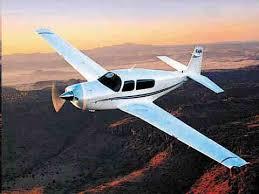 Single piston prop engine aircraft are ideally suited for short-range flights with a few passengers or light load of cargo in good to fair weather conditions. Pistonprop aircraft are propelled by a gas combustion propeller engine. Pistonprops are usually smaller than other aircraft categories and therefore cannot fly as far without stopping for fuel. With a speed of 200 mph it is ideally suited for flying trips upto 500 miles or less. Pistonprop single-engine aircraft are typically flown by a single pilot, but a charter provider should be able to supply flight with a co-pilot upon request.
Single piston prop engine aircraft are ideally suited for short-range flights with a few passengers or light load of cargo in good to fair weather conditions. Pistonprop aircraft are propelled by a gas combustion propeller engine. Pistonprops are usually smaller than other aircraft categories and therefore cannot fly as far without stopping for fuel. With a speed of 200 mph it is ideally suited for flying trips upto 500 miles or less. Pistonprop single-engine aircraft are typically flown by a single pilot, but a charter provider should be able to supply flight with a co-pilot upon request.
Average Passenger Capacity: 3-4
Representative Aircraft: Beech Bonanza, Cessna 206, Cessna Skylane 210, Piper Cherokee Six, Cirrus SR-22
2. Multi-Piston Aircraft
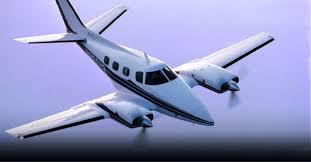 Multi Piston prop aircraft are ideally suited for short-range flights for a small group of passengers or light cargo. Pistonprop multis are usually less expensive than turboprops or jets. Pistonprop multi-engine aircraft are considered safer and more reliable than single-engine piston aircraft, especially in rough weather conditions. While pistonprop multis are larger than their single-engine counterparts and can carry more people, weight and cargo, they are still typically smaller than turboprops and jets. Pistonprop multi-engine aircraft are typically flown by a single pilot, but a charter provider should be able to supply your flight with a co-pilot upon request.
Multi Piston prop aircraft are ideally suited for short-range flights for a small group of passengers or light cargo. Pistonprop multis are usually less expensive than turboprops or jets. Pistonprop multi-engine aircraft are considered safer and more reliable than single-engine piston aircraft, especially in rough weather conditions. While pistonprop multis are larger than their single-engine counterparts and can carry more people, weight and cargo, they are still typically smaller than turboprops and jets. Pistonprop multi-engine aircraft are typically flown by a single pilot, but a charter provider should be able to supply your flight with a co-pilot upon request.
Average Passenger Capacity: 1-5
Representative Aircraft: Beech Baron, Cessna 402, Piper Navajo
3. Turboprop Aircraft
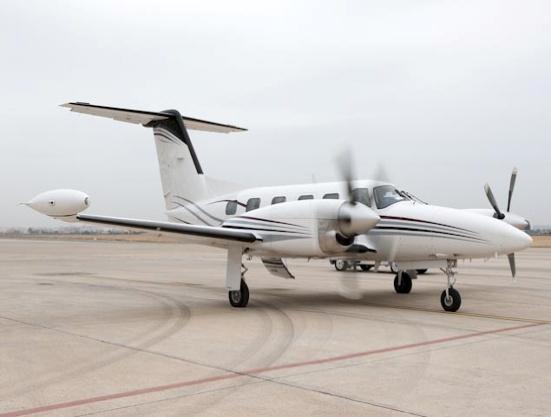 Turboprop aircraft combine the low-cost advantages of the piston aircraft while sharing some of the performance and cabin comfort advantages of light jets. Turboprops are powered by turbine propeller engines. With average cruising speeds of over 330 mph and an average nonstop range above 1,000 miles, a turboprop can travel further, faster and offer more comfort than piston aircraft while keeping charter costs below those of jet aircraft. Popular for short to mid-range flights, turboprops can access runways that are often too short for jet aircraft. Amenities often include: pressurized passenger cabins for added comfort, safety and performance and a semi-private lavatory. Baggage capacity is limited.
Turboprop aircraft combine the low-cost advantages of the piston aircraft while sharing some of the performance and cabin comfort advantages of light jets. Turboprops are powered by turbine propeller engines. With average cruising speeds of over 330 mph and an average nonstop range above 1,000 miles, a turboprop can travel further, faster and offer more comfort than piston aircraft while keeping charter costs below those of jet aircraft. Popular for short to mid-range flights, turboprops can access runways that are often too short for jet aircraft. Amenities often include: pressurized passenger cabins for added comfort, safety and performance and a semi-private lavatory. Baggage capacity is limited.
Average Passenger Capacity: 4-8
Representative Aircraft: King Air 90, 100, 200, 300, Cheyenne I, II, III, IV, Merlin, Beech Starship, Pilatus PC-12, Commander
4. Very Light Jets
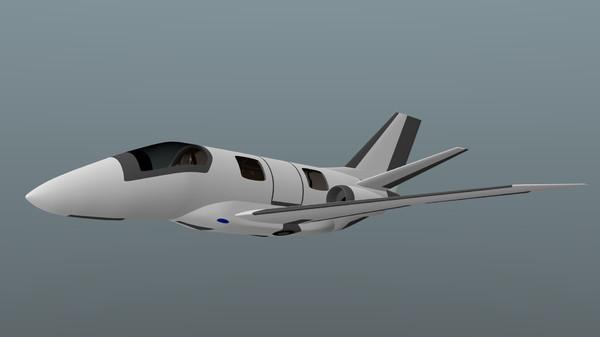 Very Light Jets are a lower-cost alternative to other charter aircraft, without sacrificing any of the service. Designed for a single pilot, VLJs are lighter than most business jets and have a maximum take-off weight of under 10,000 pounds, or 4540 kg.
Very Light Jets are a lower-cost alternative to other charter aircraft, without sacrificing any of the service. Designed for a single pilot, VLJs are lighter than most business jets and have a maximum take-off weight of under 10,000 pounds, or 4540 kg.
Average Passenger Capacity: 4-8
Representative Aircraft: Eclipse 500, Cessna Mustang and Embraer Phenom 100.
5. Light Jets
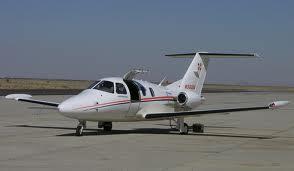 Light jets are the entry-level jet class in the charter industry. Light jets are basically used for short to mid-range trips. With average cruising speeds of 440 mph and an average nonstop range of about 1,500 miles, a light jet can travel further and faster than non-jet aircraft while operating in and out of airports not accessible by the major airlines. Amenities often include: pressurized passenger cabins for added comfort, safety and performance and a semi-private lavatory. Light jets have limited baggage capacity and often cannot accommodate skis or large golf bags.
Light jets are the entry-level jet class in the charter industry. Light jets are basically used for short to mid-range trips. With average cruising speeds of 440 mph and an average nonstop range of about 1,500 miles, a light jet can travel further and faster than non-jet aircraft while operating in and out of airports not accessible by the major airlines. Amenities often include: pressurized passenger cabins for added comfort, safety and performance and a semi-private lavatory. Light jets have limited baggage capacity and often cannot accommodate skis or large golf bags.
Average Passenger Capacity: 4-8
Representative Aircraft: Citation II, Learjet 35, Falcon 10, Westwind, Beechjet 400.
6. Mid Jets
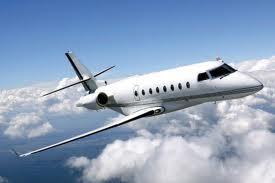 Midsize Jet aircraft optimally blend comfort, performance and economy for medium length flights. With average cruising speeds over 500 mph and a nonstop range of about 2,100 miles, a midsize jet can travel further, faster and with more comfort then light jets while operating in and out of airports not accessible by the major airlines. Most of the midsize jet aircraft have external baggage storage and can accommodate a reasonable amount of baggage. However, some aircraft such as the Hawker line of private jets only have internal baggage storage and can pose problems for skis or other bulky items. Most midsize jets offer a private lavatory.
Midsize Jet aircraft optimally blend comfort, performance and economy for medium length flights. With average cruising speeds over 500 mph and a nonstop range of about 2,100 miles, a midsize jet can travel further, faster and with more comfort then light jets while operating in and out of airports not accessible by the major airlines. Most of the midsize jet aircraft have external baggage storage and can accommodate a reasonable amount of baggage. However, some aircraft such as the Hawker line of private jets only have internal baggage storage and can pose problems for skis or other bulky items. Most midsize jets offer a private lavatory.
Average Passenger Capacity: 5-9
Representative Aircraft: Learjet 55, Falcon 20, Hawker 800, Citation VII
7. Heavy Jets
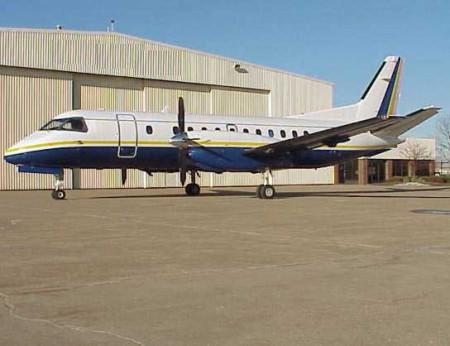 Heavy jets are top-of-the-line executive aircraft offering optimum performance and amenities for long-range flights. With average cruising speeds of 530 mph and an average nonstop range over 4,000 miles, a heavy jet can travel further and with more comfort than smaller jets while operating in and out of airports not accessible to the major airlines. Amenities usually found onboard heavy jets include; a private lavatory, external baggage compartments, stereo DVD, satellite phone, fax, and a full galley. A flight attendant can enhance your flight experience, improve safety and assist with gourmet catering for high-end business and entertainment.
Heavy jets are top-of-the-line executive aircraft offering optimum performance and amenities for long-range flights. With average cruising speeds of 530 mph and an average nonstop range over 4,000 miles, a heavy jet can travel further and with more comfort than smaller jets while operating in and out of airports not accessible to the major airlines. Amenities usually found onboard heavy jets include; a private lavatory, external baggage compartments, stereo DVD, satellite phone, fax, and a full galley. A flight attendant can enhance your flight experience, improve safety and assist with gourmet catering for high-end business and entertainment.
Average Passenger Capacity: 10-19
Representative Aircraft: Falcon 900 or 2000 Challenger 600, 601 or 604, Gulfstream II, III, IV or V
8. Turboprop Airliners
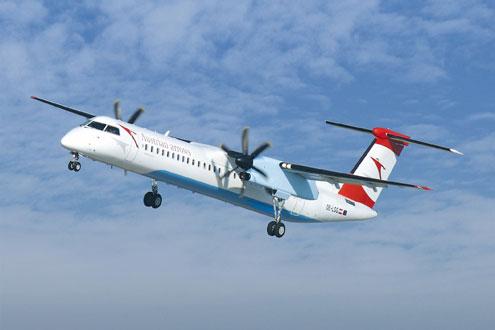 Turboprops airliners combine a larger passenger cabin with turboprop performance. Popular for short to mid-range flights, they can often land at airports with runways too short for jet aircraft and are typically more economical than jet airliners. Turboprop airliners are powered by two to four turbine propeller engines. Compared to regular turboprop aircraft they usually have more powerful engines and a longer nonstop range. Turboprop airliners feature pressurized passenger cabins for added comfort, safety and performance. Some turboprop airliners feature executive configurations with multiple amenities while others have commercial airliner configurations to maximize passenger capacity. While the majority of turboprop airliners are used for scheduled service, many are available for charter through charter companies, brokers and charter divisions of airlines.
Turboprops airliners combine a larger passenger cabin with turboprop performance. Popular for short to mid-range flights, they can often land at airports with runways too short for jet aircraft and are typically more economical than jet airliners. Turboprop airliners are powered by two to four turbine propeller engines. Compared to regular turboprop aircraft they usually have more powerful engines and a longer nonstop range. Turboprop airliners feature pressurized passenger cabins for added comfort, safety and performance. Some turboprop airliners feature executive configurations with multiple amenities while others have commercial airliner configurations to maximize passenger capacity. While the majority of turboprop airliners are used for scheduled service, many are available for charter through charter companies, brokers and charter divisions of airlines.
Average Passenger Capacity: 19-65
Representative Aircraft: Beech Commuter 1900, Jetstream 31, Swearingen Metro
9. Jet Airliners
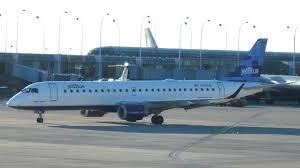 Jet airliners are capable of carrying large groups of people or heavy cargos on medium to long-range flights. The wide variety of jet airliner types encompass diverse performance characteristics. Smaller jet airliners are designated "regional" and are best suited for mid-range domestic transport, while the largest jet airliners can carry hundreds of passengers over thousands of non-stop miles. Jet airliners are powered by two to four jet engines and typically feature pressurized passenger cabins for added comfort, safety and performance. Jet airliners can be either executive configured, featuring multiple berths, lavatories, a gym, shower, meeting room or study, and other luxurious appointments; or economy-configured like a commercial airliner to maximize passenger capacity. While the majority of jet airliners are used for scheduled service, many are available for charter through charter companies, brokers and charter divisions of major airlines.
Jet airliners are capable of carrying large groups of people or heavy cargos on medium to long-range flights. The wide variety of jet airliner types encompass diverse performance characteristics. Smaller jet airliners are designated "regional" and are best suited for mid-range domestic transport, while the largest jet airliners can carry hundreds of passengers over thousands of non-stop miles. Jet airliners are powered by two to four jet engines and typically feature pressurized passenger cabins for added comfort, safety and performance. Jet airliners can be either executive configured, featuring multiple berths, lavatories, a gym, shower, meeting room or study, and other luxurious appointments; or economy-configured like a commercial airliner to maximize passenger capacity. While the majority of jet airliners are used for scheduled service, many are available for charter through charter companies, brokers and charter divisions of major airlines.
Average Passenger Capacity: 25-500+
Representative Aircraft: Airbus 300, Boeing 727, McDonnell-Douglas DC-10
10. Helicopters
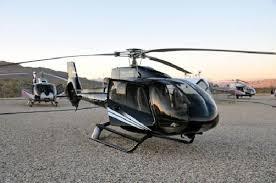 Helicopters can move into and out of difficult to reach places like big-city congestion or remote wilderness locations. They are perfect for small groups of people that need to travel a short distance in good weather conditions. Today's modern charter helicopters are typically powered by a single jet engine or dual jet engines and fly at speeds up to 175 mph for average ranges of 100-350 miles. Helicopter charter enables passengers to hover to take photos of a real estate site, carry the injured to area hospitals, land in locations where there are no available airports and generally get in and out of places faster and easier than with fixed-wing aircraft..
Helicopters can move into and out of difficult to reach places like big-city congestion or remote wilderness locations. They are perfect for small groups of people that need to travel a short distance in good weather conditions. Today's modern charter helicopters are typically powered by a single jet engine or dual jet engines and fly at speeds up to 175 mph for average ranges of 100-350 miles. Helicopter charter enables passengers to hover to take photos of a real estate site, carry the injured to area hospitals, land in locations where there are no available airports and generally get in and out of places faster and easier than with fixed-wing aircraft..
Average Passenger Capacity: 3-10
Representative Aircraft: Bell Jetranger, Eurocopter Twinstar, Sikorsky S76, and Agusta 109




